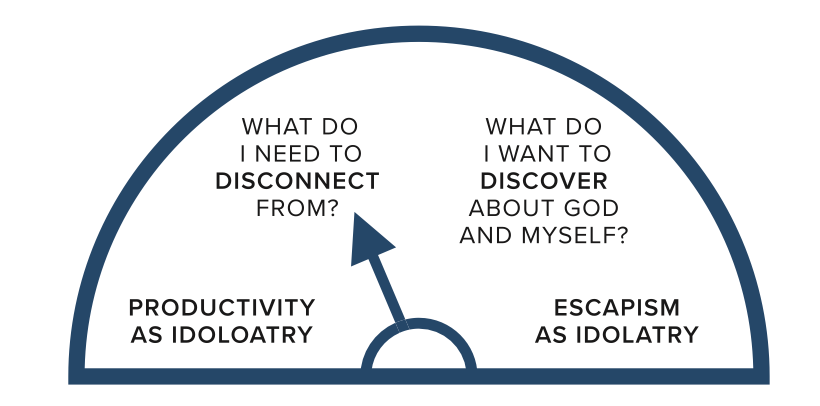Rest, on its surface, seems like such a simple concept. Yet, for the vast majority of us, our lives are overflowing with work deadlines, social obligations, and wasted energy spent trying to live up to the expectations that the world has placed on us. God wants us to architect our lives in a way that depends on Him for strength and sustenance, and not ourselves.
OBJECTIVE
Discover and explore God’s heart for Sabbath rest as it relates to growth as a leader and ability to lead for the long haul. Over the course of this lesson, you will…
- Explore why God created man and instituted the rhythm of Sabbath rest.
- Make a practical Sabbath plan for your life in the city.
- Live out your plan at least twice before our next meetings.
- Debrief your experience with your process partner and share ideas about possible “rest scenarios” in the city.
- Share the exercise with a friend.
“In repentance and rest is your salvation, in quietness and trust is your strength.”
ISAIAH 30:15 (NIV)
UNDERSTAND | Rhythms of Rest
God made humans to uniquely reflect His image in having the capacity to create and cultivate. And from the beginning, as He gave us this creation mandate, He patterned in His own work the rhythm of rest. If we are to continually give Him glory in our image-bearing through creating and cultivating, then we need to set aside time to be restored and re-centered. As we experience recovery from this rest, we encourage rejuvenation in others, and therefore, are ourselves “re-created.”
What is implicit in the Sabbath command is our need for restoration. God ceased from creating, not because he needed rest or restoration, but because we do (Genesis 1:31). Where God has boundless energy, we do not. God therefore models rest so that we mandate that rest for ourselves and for any that we lead. In this way, the mandate for rest reflects God’s goodness and justice. Creating taps us out. As invigorating as it can be at times, it can also be depleting, blistering, or boring. Our resources are limited because we are finite. As such, Sabbath is not for more creating. It is for re-creating…Us.
“Stop creating” is the sum of it. This is clear enough. But this thought leaves us more than a little susceptible to our finicky rule-making. Is doing laundry creating? Is writing a blog post ok? What about elbowing your way through the Trader Joe’s weekend crowd? A simple principle can help us discern: Cease from what is necessary. Embrace what brings life.
“Sabbath tunes you into God’s voice instead of the voices of the cultural narrative that (a) I am what I do, (b) I am what I have, or (c) I am what others say about me.”
HENRI NOUWEN
Sabbath—It’s one day, yet when we skip it, we are left without life-giving rest for 2 weeks.
- Disconnect: Leave the familiar. It’s a time to cease from what is necessary. A time for disengagement from productivity. A space for reflection and closure.
- Discover: A God who refreshes It’s the time for embracing what brings life. A time where we engage, dream, and wonder what is to come. The diagram shows how we can tend toward living outside of God’s design for rest by idolizing productivity or escapism. Idolatry is anything we worship in the place of God. We can worship our productivity by overworking and over scheduling life. We can worship escapism by ignoring responsibilities and zoning out in front of a screen. God’s design for work and rest rejects idolatry and lives in the tension of disconnecting and discovering.

How do you tend to idolize productivity or escapism?
Why is this so important? Because leadership is stewardship—the cultivation of the resources God has entrusted to you for His glory. Sabbath gives us both theological and practical help in managing one of our primary resources —our time.
Rhythms of rest allow us to reflect on the old, while waiting in expectancy for the new. Sabbath rest not only allows us to approach a new week with freshness. As we meet our needs of soul and body, we also encourage others to care for themselves as well through our example. We can create a community which values rest, showing off God’s design for how creation was meant to reflect Him. Equally as important, we can meet the needs of our soul and body and because our choices impact others, we can encourage others to care for themselves as well through our example.. Rhythms of rest are God’s idea.
PRACTICE
Make a Plan
With pace of life, work demands, relationships, pressures to be out and about, and so much more, it’s possibly harder than ever in our culture to find time to rest. It’s important to remember, Sabbaths don’t just happen, they are created!
- Evaluate and Take Inventory.
Think about your current rhythms of rest. Journal about what you do well and what you do not. What do you really want to experience in your sabbath rhythms? - Brainstorm what brings life and what doesn’t?
What must I disconnect from? (distracting things or things that veer us into productivity.)
What must I discover? (What brings you abundance, recovery, renewal.) As we start the week from a position of rest, we are filled to give out.
Create a Note
- Write out a Sabbath plan for a day this month (or even a portion of a day) and live it out.
Here’s a helpful grid to think through:
– Be Prepared beforehand (intentional) – So that you can actually rest (laundry done, meals planned, etc). – Be Present. (relational) – Fast from media that stifles relating. Focus on sharing moments.
– Be Playful (recreational) – Doing things that are fun, make us laugh, and endear us to life. – Be Prayerful (devotional) – Be intentional to remember God’s presence and take time to commune with Him.
There is no perfect way to participate in Sabbath. Be free. Enjoy your creator. Vehemently deny performance. Performance actually prohibits rest. - How can you encourage others to rest? Perhaps you are a team leader or supervisor who can share the wisdom and invite those around you to engage in this practice?
- Sometime before our next meeting, take time to reflect and journal about how it went.
What did you enjoy? What fell flat and felt forced? What do you want to continue? The more you delight in God’s design of rest, the easier it becomes to live out the practice.
PROCESS
Grab some intentional time with a process partner.
Share specifically about your Sabbath Plan. What do you hope the day will be (even if it’s simple?) What do you plan to intentionally disengage from? What do you hope to engage with that brings life and recovery to your mind, body, and soul?
(If you have already lived out your Sabbath Plan, share about how it went.)
Discuss the realities and core false beliefs that keep you from living out consistent rhythms of rest. Go to those places with one another. What can help you continue to be intentional with Sabbath rest in this extended season?
ACT
Start a Conversation about rest with a co- worker or friend:
If there’s one thing followers of Jesus in cities have in common with unbelievers, it’s likely the lack of rest. We can all relate to the crowded isolation, pace of life, urban stress, and work demands of living in the city. With whom in your life can you bring this common topic? How can you share about God’s design for rest and living?
Create a long-term plan for sabbath
In this journey of rest, we must all remember that practice makes progress. But if we want to be serious in our counter-formation as disciples of Christ, it will take longer than a month of learning and practice to integrate Christian rest in our lives in sustainable ways. Make a 3-6 month Sabbath plan and ask someone to hold you accountable to it. Here are some questions to consider as you make your 3-6 month plan:
- What do I want to learn? What books do I want to read? What podcasts do I want to listen to? What classes do I want to enroll in?
- Who do I want to connect with? What friendships do I want to re- engage with? How would I want to consider making new life-giving relationships? Who will help me in creating rhythms of rest?
- What activities would engage a divine sense of adventure and creativity? Would planning out refreshing travel give you life? How does exercise and healthy self-care incorporate into your Sabbath plan? What new experiences would help you engage with a different aspect of God? Consider reviewing the Unity module for some ideas.
Judith Shulevitz (writer and culture critic for NY Times, Jewish woman) describes the dynamic of work and Sabbath rest this way:
“My mood would darken until, by Saturday afternoon, I’d be unresponsive and morose. My normal routine, which involved brunch with friends and swapping tales of misadventure in the relentless quest for romance and professional success, made me feel impossibly restless. I started spending Saturdays by myself. After a while I got lonely and did something that, as a teenager profoundly put off by her religious education, I could never have imagined wanting to do. I began dropping in on a nearby synagogue.
It was only much later that I developed a theory about my condition. I was suffering from the lack [of a Sabbath]. There is ample evidence that our relationship to work is out of whack. Ours is a society that pegs status to overachievement; we can’t help admiring workaholics. Let me argue, instead, on behalf of an institution that has kept workaholism in reasonable check for thousands of years.
Most people mistakenly believe that all you have to do to stop working is not work. The inventors of the Sabbath understood that it was a much more complicated undertaking. You cannot downshift casually and easily. This is why the Puritan and Jewish Sabbaths were so exactingly intentional. The rules did not exist to torture the faithful. They were meant to communicate the insight that interrupting the ceaseless round of striving requires a surprisingly strenuous act of will, one that has to be bolstered by habit as well as by social sanction.”
WANT MORE?
Rest is a part of the Leadership Development Guide.
